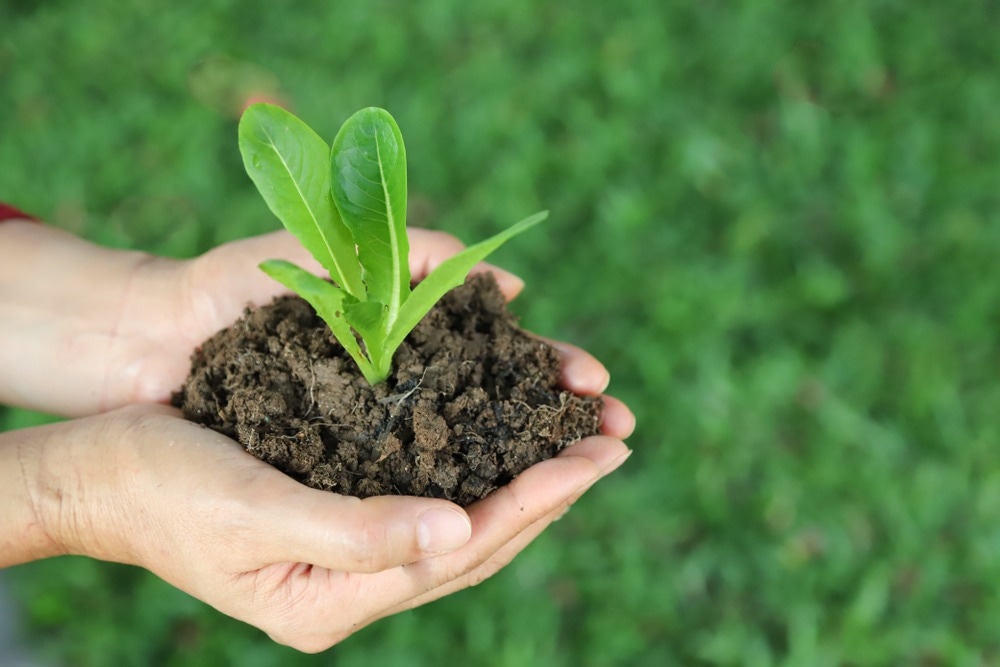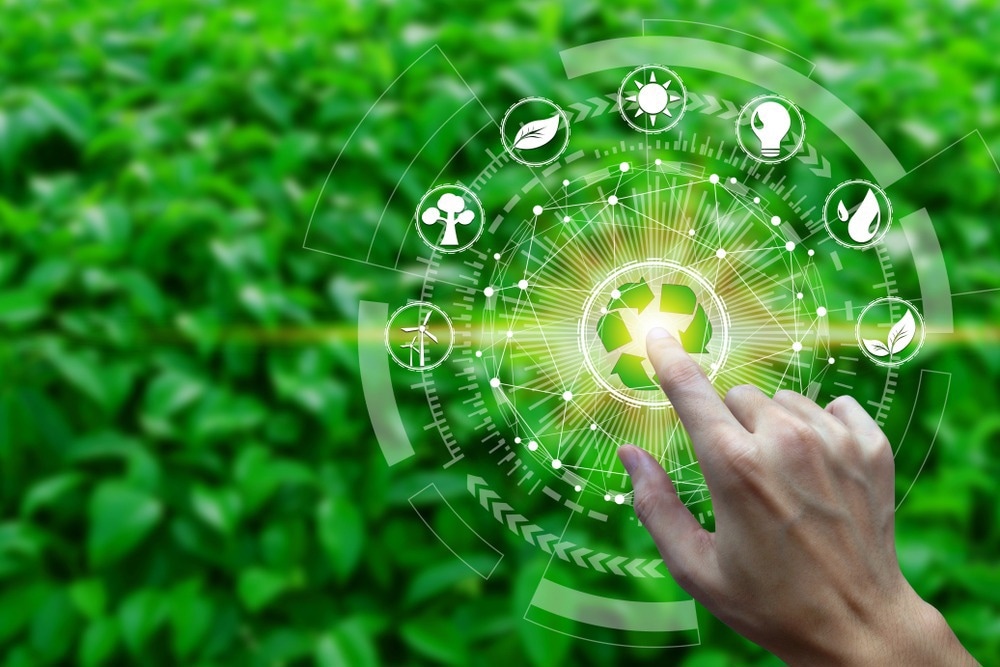Biopesticides are made using naturally derived active ingredients and provide a more sustainable method of pest and disease management than synthetic pesticides. The efficacy of biopesticides is largely dependent on how they are formulated and could further be improved by utilizing new formulation techniques, such as nanotechnology.

Image Credit:
Plant pests and diseases cause damage to crops during production and storage, reducing crop yields and negatively affecting food quality. This significantly impacts the agricultural industry; the FAO estimates that plant pests are responsible for global crop losses of up to 40% each year, and plant diseases cost the global economy around $220 billion annually.
These losses threaten global food security, which is a particularly concerning problem when considering the projected increase in the human population over the coming years. Controlling plant pests and diseases is therefore crucial and primarily achieved using synthetic pesticides.
Concerns surrounding the use of synthetic pesticides
The use of synthetic pesticides has a variety of negative effects, including on the health of humans and wildlife, as well as on the environment. Synthetic pesticides can kill non-target wildlife such as pollinators, birds, and fish and contaminate surface water and groundwater. Some of these pesticides have been linked with the development of cancer and respiratory illness in humans and may pose a particular threat to the health of farmers, who are likely to be in close contact with them.
There are also concerns surrounding the health effects of consuming products containing synthetic pesticide residues, as well as the development of pesticide resistance among pests, which reduces the efficacy of pesticides and puts crops at increased risk of damage. These problems have led to the introduction of restrictions on the use of many chemical pesticides and are causing an increase in demand for more sustainable alternatives, such as biopesticides.
How can biopesticides improve the sustainability of agriculture?
Unlike synthetic pesticides, biopesticides are based on natural products; they are formulated using biologically active ingredients derived from plants, bacteria, viruses, and fungi.The modes of action of biopesticides are more diverse than synthetic pesticides; for example, they may act as neuromuscular toxins, metabolic poisons or interfere with growth regulation or pest mating activities. This increased diversity means pests are less likely to develop resistance to biopesticides than synthetic pesticides.
Biopesticides are also more sustainable than synthetic pesticides as they have lower toxicity levels, increased biodegradability within the environment, and are more specific to the target pest, meaning that there are fewer negative impacts on non-target wildlife and humans.

Image Credit: laymanzoom/Shutterstock.com
The role of formulation in creating effective biopesticides
Despite their significant benefits, there are still some problems associated with biopesticides that prevent them from being more widely used by farmers. This includes the increased cost of biopesticides compared to synthetic pesticides, delays in their action, and their relatively short shelf life. There are also issues with the consistency of biopesticide performance in the field, partially due to their susceptibility to environmental conditions such as high temperatures and ultraviolet light.
Biopesticide formulation plays an essential role in determining the product's efficacy; as such, making changes to the formulation can help overcome many of these challenges. Biopesticides are formulated using a naturally derived active ingredient, along with a suitable carrier and additives, which enhance the product's efficacy in the field. The pesticide should be formulated to stabilize the ingredients during storage, enhance protection from environmental degradation, aid in product application, and increase the activity or contact of the active ingredient when applied.
Currently, biopesticides are mainly produced in solid forms, such as powders, granules, or wettable powders, which must be added to water before application. These dry formulations are produced using methods like freeze drying, air drying, or spray drying and may include additives such as dispersants, which prevent clumping. However, the use of dry biopesticides has some major setbacks, including difficulties with achieving a uniform distribution of the active ingredients and the tendency of the pesticide to become clogged within application systems. As such, liquid biopesticides, including emulsions, oil dispersions, and capsule suspensions, are preferred by many farmers. Liquid formulations may contain substances like antifreeze or stickers, which increase the adhesion of the pesticide to plant surfaces and the product's resistance to rain.
When compared to solid formulations, liquid biopesticides are easier to apply to crops as they are more compatible with modern irrigation systems, and microbes suspended in liquid formulations have longer viability than those in dry forms, meaning the product can be applied less frequently, thereby reducing costs to the farmer. Capsule suspensions are particularly beneficial because the active ingredient is encapsulated in a polymer capsule and suspended in an aqueous phase. The capsule protects the active ingredient from environmental degradation caused by UV radiation, high temperatures, and other extreme conditions, and it also enables its gradual release to crops.
The future of biopesticide formulation
Although still in the initial stages of development, nano-biopesticides can potentially increase the efficacy of biopesticides even further. Nano-biopesticides are formulated using nanotechnology and contain materials with at least one size dimension ranging from 1 to 100nm. Nano-biopesticides include nano-emulsions, nano-encapsulations, and nano-gels. The nanoparticles in the product have a high surface area to volume ratio due to their small size, which allows for quicker action, greater solubility, and improved adherence to surfaces. This also means that smaller quantities of active ingredients can be used in these formulations.
Continued research into techniques such as nanotechnology, along with the discovery of new active compounds, will help to further improve the efficacy of biopesticides and facilitate the gradual replacement of synthetic pesticides with biopesticides.
Sources:
- Kumar, S., Nehra, M., Dilbaghi, N., Marrazza, G., Hassan, A.A. and Kim, K.H. (2019). Nano-based smart pesticide formulations: emerging opportunities for agriculture. Journal of Controlled Release, 294, pp.131-153. https://doi.org/10.1016/j.jconrel.2018.12.012
- Secretariat, I.P.P.C., Gullino, M.L., Albajes, R., Al-Jboory, I., Angelotti, F., Chakraborty, S., Garrett, K.A., Hurley, B.P., Juroszek, P., Makkouk, K. and Pan, X. (2021). Scientific review of the impact of climate change on plant pests. FAO on behalf of the IPPC Secretariat. https://doi.org/10.4060/cb4769en
- Bharti, V. and Ibrahim, S. (2020). Biopesticides: production, formulation and application systems. International Journal of Current Microbiology and Applied Science, 9(10), pp.3931-3946. https://doi.org/10.20546/ijcmas.2020.910.453
- Mali, S.C., Raj, S. and Trivedi, R. (2020). Nanotechnology a novel approach to enhance crop productivity. Biochemistry and Biophysics Reports, 24, p.100821. https://doi.org/10.1016/j.bbrep.2020.100821
- Koul, O. ed. (2019). Nano-biopesticides today and future perspectives. Academic Press.
- Sachdev, S. and Singh, R.P. (2016). Current challenges, constraints and future strategies for development of successful market for biopesticides. Climate Change and Environmental Sustainability, 4(2), pp.129-136. https://doi.org/10.5958/2320-642X.2016.00014.4
- Aktar, W., Sengupta, D. and Chowdhury, A. (2009). Impact of pesticides use in agriculture: their benefits and hazards. Interdisciplinary Toxicology, 2(1), pp.1-12. https://doi.org/10.2478/v10102-009-0001-7
Further Reading
Last Updated: Nov 25, 2022